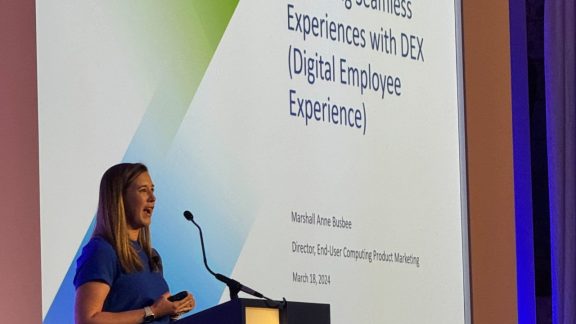Today marks a major milestone for VMware’s End-User Computing vision with the launch of VMware Horizon App Manager, a user-centric management service for accessing cloud applications. We are excited to bring this new service to our customers.
Over the last few years, the “tectonic plates” of IT have been shifting. In increasing numbers, organizations are moving to embrace the cloud in new, unexpected ways. As our customers push for new workforce efficacies they are adopting a new generation of applications like WebEx, salesforce.com, Google Apps, BroadVision and/or Box.net. Organizations are seeing value and productivity gains by having applications and data available anywhere, across different devices – and the devices are changing just as fast.
While Windows is likely to be the dominate Operating System in enterprises for years to come, it is clear that new devices are carving their niche in the workplace. iPads, Android tablets and phones, and many other non-Windows based devices are fast becoming an equal rival to the PC for collaboration and communication.
Enterprise IT pros, who once were able to say “that device is not supported,” are facing an empowered workforce that wants to know why they can’t have the same on-demand access to their work apps that they have with their personal apps. The phrase “consumerization of IT” is taking hold, and while many are quick to suggest this isn’t happening in many IT shops, we have talked to and surveyed growing numbers of customers that are further along in this process than anyone could have anticipated.
Through the process of launching Horizon App manager, I have heard from some customers that they now have a cloud first policy – where they look to cloud applications first, and if they can’t find one, only then do they look for something that needs to be installed. In fact, we talked to a Fortune 100 company that stated that they don’t just have 10 or 20 SaaS applications, they have hundreds already in use by their workforce.
At VMware, we believe this trend is just beginning.
VMware Horizon App Manager provides the foundation customers need to embrace a new way to work on their terms. At its core, VMware Horizon App Manager includes an identity-as-a-service hub that securely extends a user’s existing identity in systems such as Microsoft Active Directory or other directory options, into third-party public cloud applications like Box.net, BroadVision, Google, salesforce.com, WebEx and Workday. This dramatically simplifies the management of multiple access credentials, a necessity brought about by the growing number of cloud applications now found in a typical enterprise. Simplification benefits both IT and users by collapsing separate identity silos into a single enterprise identity that secures user access across private and public clouds. In addition, the VMware Horizon App Manager provides an open, user-centric platform for accessing cloud applications within a single portal that is accessible from a wide range of end-user devices.
Over time, Horizon will leverage this foundation of enterprise security and policy to help customers manage other services including virtualized Windows Applications, published applications, data services, and some of our own next generation applications like Sliderocket, Zimbra, and Mozy.
Behind the scenes…
I wanted to put a quick word in this blog about VMware as a company. It is rare that a company the size of VMware would encourage “what if” ideas to be not only considered, but also funded, and delivered.
Nearly two years ago, armed with a presentation, a business plan, and a bit of passion – A small team of us presented what was then called “Project Origami” to the R&D leadership team. From there, the vision for what is now Horizon App Manager started to grow.
Today, I couldn’t be more proud of the product, and the team that enabled this vision to come to reality. We look forward to working hard, learning with you, and building the best solutions possible to help you, our customers, embrace a new way to work.
Noah Wasmer
Director, Advanced Development, End-User Computing, VMware
May 17, 2011






